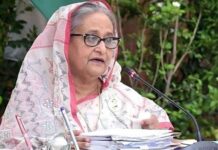The role of females in early education is multifaceted and crucial. Women, often as mothers, caregivers, and educators, play a central role in shaping the early development and education of children.
The key roles include: a. Primary Caregivers: Mothers and Female Caregivers: Women are frequently the primary caregivers in a child’s early years. They provide emotional support, care, and nurturing, which are essential for a child’s social and emotional development. b. Early Childhood Education. Preschool Teachers: A significant number of early childhood educators are women. Their influence extends beyond imparting academic knowledge; they also contribute to the social and emotional well-being of young children. c. Role Models: Positive Female Role Models: Having positive female role models in early education is crucial for both boys and girls. It helps challenge gender stereotypes and provides diverse perspectives. d. Educational Leadership: Administrators and Principals: Women are increasingly taking leadership roles in educational institutions, including those focused on early education. Their leadership is important in shaping educational policies and practices. e. Encouraging Gender Equality: Promoting Equal Opportunities: Women in early education can actively work towards creating an environment that fosters gender equality. This includes ensuring that both boys and girls have equal opportunities for learning and participation.
The significance of female education in child education is multifaceted and extends to various aspects of a child’s development and well-being
- Fostering Social Skills: Emphasis on Communication and Empathy: Women often excel in communication and empathy, which are vital skills in early education. They create environments where children feel heard and understood, fostering positive social interactions. g. Diversity and Inclusion: Celebrating Diversity: Women in early education can play a key role in creating inclusive environments that celebrate diversity in all its forms, including cultural, ethnic, and socio-economic diversity. h. Advocacy for Early Education: Advocacy and Policy Development: Women in leadership roles can advocate for policies that support early education, including funding for quality preschool programs and resources for teachers. i. Parental Involvement. Encouraging Parental Involvement: Women often take active roles in engaging parents in their children’s early education. Building strong connections between educators and parents is crucial for a child’s overall development. j. Emotional Intelligence: Emphasizing Emotional Development: Women, known for their emotional intelligence, contribute significantly to the emotional development of children.
The history of female and child education has undergone significant changes over time, reflecting evolving societal attitudes, cultural norms, and educational philosophies. Its development include: a. Early History: Ancient Civilizations: In some ancient civilizations, formal education was limited and often exclusive. However, there were instances where women from elite families received education in areas like literature, music, and dance. Medieval and Renaissance Periods: b. Monastic and Convent Education: During the medieval period, some religious institutions provided education for women in convents and monasteries. Education was often focused on religious studies. c. Renaissance Humanism: The Renaissance period saw increased interest in classical education. While education for women was not widespread, some upper-class women gained access to literature, philosophy, and the arts. Enlightenment and 19th Century: d. Emergence of Female Academies: In the 18th and 19th centuries, female academies emerged, providing education to women in various subjects. However, the curriculum was often limited and focused on preparing women for their roles as wives and mothers. e. Late 19th to Early 20th Century: Women’s Suffrage Movement: The late 19th and early 20th centuries saw the rise of the women’s suffrage movement, advocating for women’s rights, including education.
- Higher Education for Women: Women began gaining access to higher education institutions. The establishment of women’s colleges and universities contributed to the academic advancement of women. g. Mid-20th Century: Post-World War II: After World War II, there was a renewed focus on education globally. Efforts were made to ensure universal access to education for both genders. h. International Agreements: International agreements such as the Universal Declaration of Human Rights (1948) emphasized the right to education for all, irrespective of gender. i. Late 20th Century to Present: Women’s Liberation Movement: The women’s liberation movement of the 1960s and 1970s challenged traditional gender roles and stereotypes, advocating for equality in all aspects, including education. j. Gender Parity in Education: Progress has been made in achieving gender parity in primary and secondary education in many parts of the world. Efforts have been directed towards closing gender gaps in literacy and enrolment. k. Focus on Girls’ Education: International initiatives, such as the United Nations Millennium Development Goals and Sustainable Development Goals, have emphasized the importance of girls’ education for global development. Ongoing efforts are needed to address remaining challenges and ensure equitable access to education for all, regardless of gender.
The significance of female education in child education is multifaceted and extends to various aspects of a child’s development and well-being: a. Role Modeling: Educated Female Role Models: Educated women serve as role models for children. Seeing women pursue education encourages children, especially girls, to value learning and aspire to achieve their academic potential. b. Educational Support at Home: Enhanced Learning Environment: An educated mother or female caregiver is more likely to understand the importance of education. This knowledge translates into a more supportive home environment for learning, where educational activities are encouraged. c. Improved Literacy Rates: Promotion of Literacy: Educated women are more likely to promote literacy within their families. They can engage in reading activities with children, fostering a love for books and language. d. Positive Impact on Child Health: Health Education: Educated mothers are more likely to be aware of health and hygiene practices. This knowledge contributes to better child health outcomes as mothers can make informed decisions about nutrition, vaccinations, and preventive healthcare. e. Social and Emotional Development: Emotional Intelligence: Women, often primary caregivers, play a crucial role in emotional development. Educated women are better equipped to understand and respond to the emotional needs of children, fostering positive social and emotional development.
- Breaking Gender Stereotypes: Gender Equality Values: Education empowers women, enabling them to challenge traditional gender roles. Educated women can instil values of gender equality in their children, promoting a more inclusive and equitable mindset. g. Economic Empowerment: Economic Contribution: Educated women are more likely to contribute to the economic well-being of their families. This financial stability can translate into improved access to educational resources and opportunities for their children. h. Global Development Goals: Contribution to Global Goals: Supporting female education aligns with global development goals, including those outlined in the United Nations’ Sustainable Development Goals (SDGs), particularly Goal 4 (Quality Education) and Goal 5 (Gender Equality). Recognizing and investing in female education is an essential step towards building stronger, healthier, and more equitable societies.






















